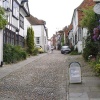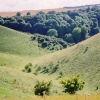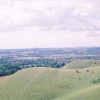Please login or click here to join.
Forgot Password? Click Here to reset pasword
 |  |  |  |  |  |
| Edward Lever Posts: 734 Joined: 22nd Dec 2005 Location: UK | quotePosted at 23:37 on 29th June 2017 Most recent DSLRs can now deliver good quality images at 1600 ISO and usable images at up to 25600 ISO. This is a huge leap forward from the early days of digital photography, when shooting at anything above 100 ISO produced a noisy image. Prime lenses were often the only way of getting enough light in anything but brightly sunlit conditions. Now, with the higher ISO capabilities of modern cameras, a zoom with a maximum aperture of f/4 - f/5.6 will be perfectly good enough in terms of light-gathering. The question then, is it worth paying the premium for a fast prime lens ? The advantages I can see for a prime, now that its light gathering capabilies are less important, are: 1) the wide aperture of a prime will give the ability to set a shallow depth of field 2) a prime is often of higher optical quality than a zoom 3) a prime will give a longer effective flash range Other than these three points, a modern zoom lens will give much more flexibility than a prime. Serious portrait photographers will still prefer to use a prime, for the shallow depth of field. For the walk-about photographer who wants flexibility, zoom lenses have improved so much in quality that a prime now has little extra to offer.
Edited by: Edward Lever at:29th June 2017 23:42 |
Andreas Lindberg Posts: 29 Joined: 24th May 2015 Location: Sweden | quotePosted at 10:16 on 30th June 2017 This is an interesting take on the perpetual prime vs zoom discussion. If I may make a recommendation, don't post this on DPReview. The thread will max out in no time and contain a fair amount of stupidity and abuse.  I have to admit I have never thought of it in this way. Probably because I only got into photography in 2009 when the signal to noise ratio of DSLR sensors already was reasonably good. This, of course, then just as today, did and does depend on the target medium and size. The images I post are usually somewhere around 1800x1200. At that size one is hard pressed to see a difference between well-exposed shots from a 5D4 and a 450D, unless it is ISO 1600 or more and untreated. But back to the point. The DOF and optical quality arguments can certainly be valid. But this is very much about comparing two lenses on the same camera under equal conditions. In my opinion, it is no longer possible to make the general assertion that a prime is always better than a zoom. I have had this kind of discussion on DPR, and the level of idiocy, stubbornness and groundless faith is mind-boggling. One example: I use a Canon 60D. Find me a set of primes that is sharper at corresponding focal length and aperture than my Sigma 18-35. If you are objective about it you will find that this is virtually impossible, and very very much more expensive. Another point that eternal prime-fanboyism ususally misses is that there are very few lenses that are at their best at maximum aperture. A good example for that is the Canon 50/1.4 which I use and like. In order to get an image that satisfies my desire for sharpness, I have to stop down to f/2.8 at least. For me, that defeats the meaning of having an f/1.4 lens. About the effective flash range, it is the aperture that is the deciding factor here, not the fact of the lens being a prime. All of the points you listed are often made by people who don't care about the facts of a dedicated comparison, but used in an uninformedly misleading way. Note that I don't accuse you of doing this but merely pointing it out. In the end, it is all about what one (thinks) one needs or wants, very much about money, and, for some, about protecting their version of reality. So, even though I look at it from a different angle, I would say that I don't generally disagree with you. At times, though, it can, and certainly will, get tricky. |
| Edward Lever Posts: 734 Joined: 22nd Dec 2005 Location: UK | quotePosted at 15:44 on 30th June 2017 Thanks for replying, Andreas, it is refreshing to get a response to a photographic thread, and I am pleased to see that PoE is no longer dormant (as it has been for so long) when it comes to an interest in technical matters. I am aware that making any technical comment will risk enraging some people and I never contribute to the 'expert' forums such as DPReview for this very reason. Perhaps I should have made it clear that I am an elderly photographer who grew up in the film era, where the standard ISO for film was generally no higher than 100 for negative film and was as low as 25 for Kodachrome reversal film. Very occasionally I would use 'high speed' films such as Tri-X with an ISO of 400, but this was about as good as it got. Obviously with these sort of ISO figures, it was necessary to use fast lenses, particularly if doing studio work with tungsten lighting. The slower apertures of a zoom would be of no use even if good zooms were available then. The main drift of my argument is that with the wonderfully high ISO capabilities of the modern DSLR, there is no longer the necessity of using a prime lens to gather as many photons as possible. I think we are in agreement here. Which brings me back to the point that there are only a few aspects where a prime does something better than a zoom, and the main difference is that a prime lens used wide-open can achieve a much shallower depth of field than a zoom. Sharpness is a different question, and I agree with you that a professional quality zoom will usually equal or exceed the sharpness of a prime at the same aperture and focal length setting. Having said that, there are some low end zooms where performance is truly awful and inferior to primes. I think there is still a place in the photographers kit bag for a 50 mm f/1.8 'standard' prime, which will give sharpness at that fixed focal length as good as that of a professional zoom costing ten times more. , Thanks again for replying, I hope we will see more photographic discussions on PoE in the future. P.S. Regarding the comment about flash, having done work in large venues such as theatres, it can be diificult to get enough light to illuminate the stage even with a powerful Speedlite at maximum power. The use of a prime at f/1.8 will enable pictures to be taken which are not possible at all with a zoom (even a professional zoom will typically have a maximum aperture of f/2.8). In my opinion, it is better to get a slightly soft image with the prime wide open than not get any picture at all.
Edited by: Edward Lever at:30th June 2017 17:22 |
Andreas Lindberg Posts: 29 Joined: 24th May 2015 Location: Sweden | quotePosted at 17:35 on 30th June 2017 No need to say thanks, Edward, it's my pleasure. I really enjoy a civil conversation, be it technical or not. |
| Edward Lever Posts: 734 Joined: 22nd Dec 2005 Location: UK | quotePosted at 07:33 on 1st July 2017 On 30th June 2017 17:35, Andreas Lindberg wrote:
To return to the original discussion, you will find that if you are struggling to light a large space with flash, and you are at the limits of flash power and acceptable limits of ISO, a prime will be the only option of getting that shot. |
Andreas Lindberg Posts: 29 Joined: 24th May 2015 Location: Sweden | quotePosted at 12:10 on 1st July 2017 On 1st July 2017 07:33, Edward Lever wrote:
That is almost generally true. Some notable exceptions, albeit for APS-C, are Sigma's 18-35/1.8 and 50-100/1.8. For me personally, this is still very much about usability, meaning image quality. If I was at the limit of acceptable ISO, I'd rather push an underexposed but sharp f/2.8 shot from a flexible zoom than accept a correctly exposed f/1.8 shot that is unsharp. But as I said, that's me. And in order to return to your original point, yes, it is very nice indeed to have sensors with this kind of high ISO capabilities. |
| Rod Burkey Posts: 554 Joined: 2nd Sep 2008 Location: UK | quotePosted at 13:35 on 2nd July 2017 Prime lenses still are the best for quality results. My two favourites are the Nikon 50mm f1.4 and 85mm f1.8. The images are really of very good quality, and make ideal portrait lenses. However, my "workhorse lens" is the Sigma F4 24-105 DG Art. It's quite big and heavy, but what a performer! It is so easy to put this onto my Nikon D750 or D300 when I go out walking looking for urban shots and street images / candids. It's a very convenient and easy option. one I find hard to resist. I recenty did a wedding for two friends, and the old church was delightful, but dark! I used the 85mm and 24-105mm leneses never taking anything under ISO 1250 as flash was strictly out of the question under pain of being ejected, by the Bishop no less! I used the combination of the D300 with my Sigma 10-20mm for exterior shots of the church. My 85mm lens was soon back in the bag, as I just needed the felexibility of a zoom lens for groups and snatched candids. Over 300 guests made speed a must. Legs knackered! Conclusion. If you have lots of time.........go for prime. Prime lenses deliver, but zooms are so very tempting. At the end of the day too, you only get what you pay for. Quality tells! Second hand lenses always an option too. Some people swap their lenses like socks, well not quite, but I hope you get the drift. I avoid using flash more and more as the D750 delivers at very high ISOs. My aim is for as natural looking images as possible.
|
Andreas Lindberg Posts: 29 Joined: 24th May 2015 Location: Sweden | quotePosted at 18:38 on 2nd July 2017 On 2nd July 2017 13:35, Rod Burkey wrote:
With the above in mind you can get more for less. This is the case for some of the zoom-prime comparisons I mentioned (especially when you sum up the cost for several primes), and also when you compare certain zooms. |
| Edward Lever Posts: 734 Joined: 22nd Dec 2005 Location: UK | quotePosted at 01:02 on 3rd July 2017 When comparing lens characteristics, it is clear that the majority of zooms cannot match the large maximum aperture of a prime. Therefore the sharpness comparison argument becomes irrelevant when you reach the maximum aperture of the zoom. Even a cheap prime has several stops in hand compared with the zoom before it reaches maximum aperture. I agree that doing a comparison of a zoom and a prime at smaller apertures e.g. f/5.6 may show that the zoom is sharper, but this ignores the other capabilites of the prime. In those situations where an extremely shallow depth of field is required, the prime is the winner. However, for general purpose use, the convenience of a zoom coupled with the high ISO capabilities of a modern DSLR is the way to go. Rod's example of his wedding shoot is a good example where the convenience of a zoom outweighs the possible artistic advantages of a prime. This is exactly what I said in the introductory posting. |
Andreas Lindberg Posts: 29 Joined: 24th May 2015 Location: Sweden | quotePosted at 10:08 on 3rd July 2017 On 3rd July 2017 01:02, Edward Lever wrote:
2) Not in general. Usability of primes at large apertures is a major factor. I consider the Canon 50/1.4 unusable until stopped down to at least f/2.2. 3) Depends on exactly which lenses you compare. Even before you factor in usability you have reached the point where the general statement is not valid anymore. 4) The comparison I made between the Sigma 18-35 and the primes was about the zoom's maximum aperture of f1.8. 5) Again, depends on exactly which lenses you compare and how usable they are. |